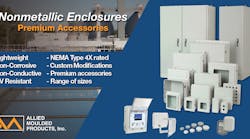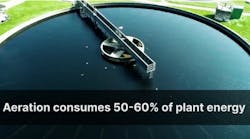The Hydra nitrate analyzer system monitors the nitrification process in aeration basins at wastewater treatment plants, a process during which toxic ammonium ions are oxidized into much less toxic nitrate ions using an aerobic activated sludge process. De-nitrification reduces the nitrate ion (NO3-) to nitrogen gas (N2) by an anoxic reaction in the same treatment basin or in a separate anaerobic digester. The NO3-N measurement helps optimize the methanol being fed to the digester, minimizing cost.
The Hydra nitrate analyzer uses two electrodes to determine the NO3-N concentration: a nitrate ion electrode and a chloride ion electrode. The nitrate ion electrode provides the primary measurement. The second electrode measures the chloride ions in the sample which have a positive interference on the nitrate electrode. The Hydra analyzer calculates the amount of chloride ion interference and subtracts the appropriate amount of signal from the nitrate measurement for accurate monitoring. An optional electrode is also available for pH or ammonium measurement.
The Hydra analyzer is configured to periodically actuate a cleaning cycle using the integral spray cleaner in the sensor thereby minimizing the formation of biofilms or other coatings on the electrodes and keeping maintenance to a minimum. Adding the optional AC10 air compressor provides the Hydra analyzer with compressed air to facilitate the cleaning cycle. The AC10 cuts plant operating costs by reducing manual cleaning time and the amount of chemicals used for unnecessary water treatments performed due to inaccurate sensor readings caused by the films and coatings that develop over time.
Contact Us
Electro-Chemical Devices Inc.
Irvine, CA
800.729.1333
www.ecdi.com
[email protected]



